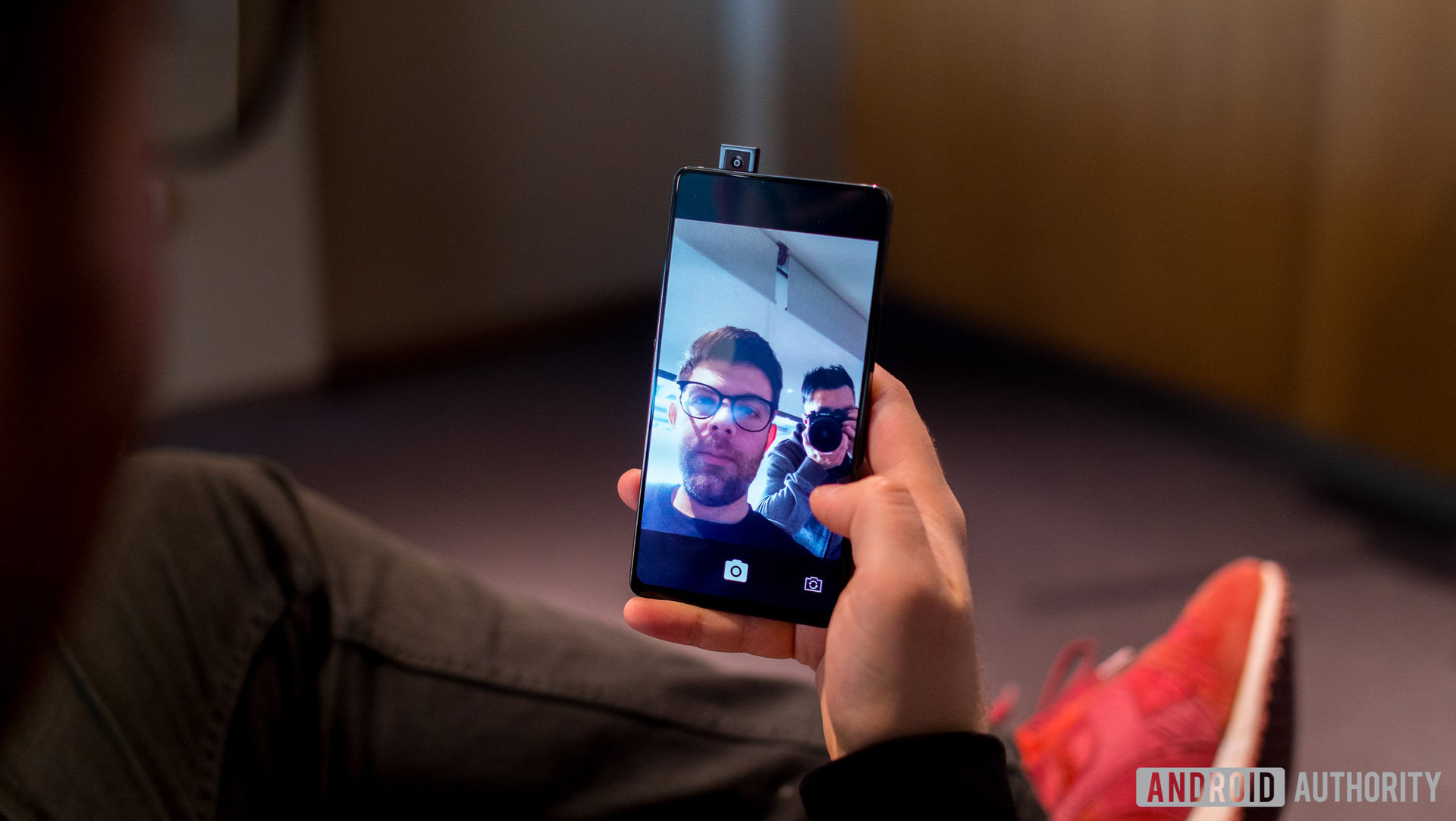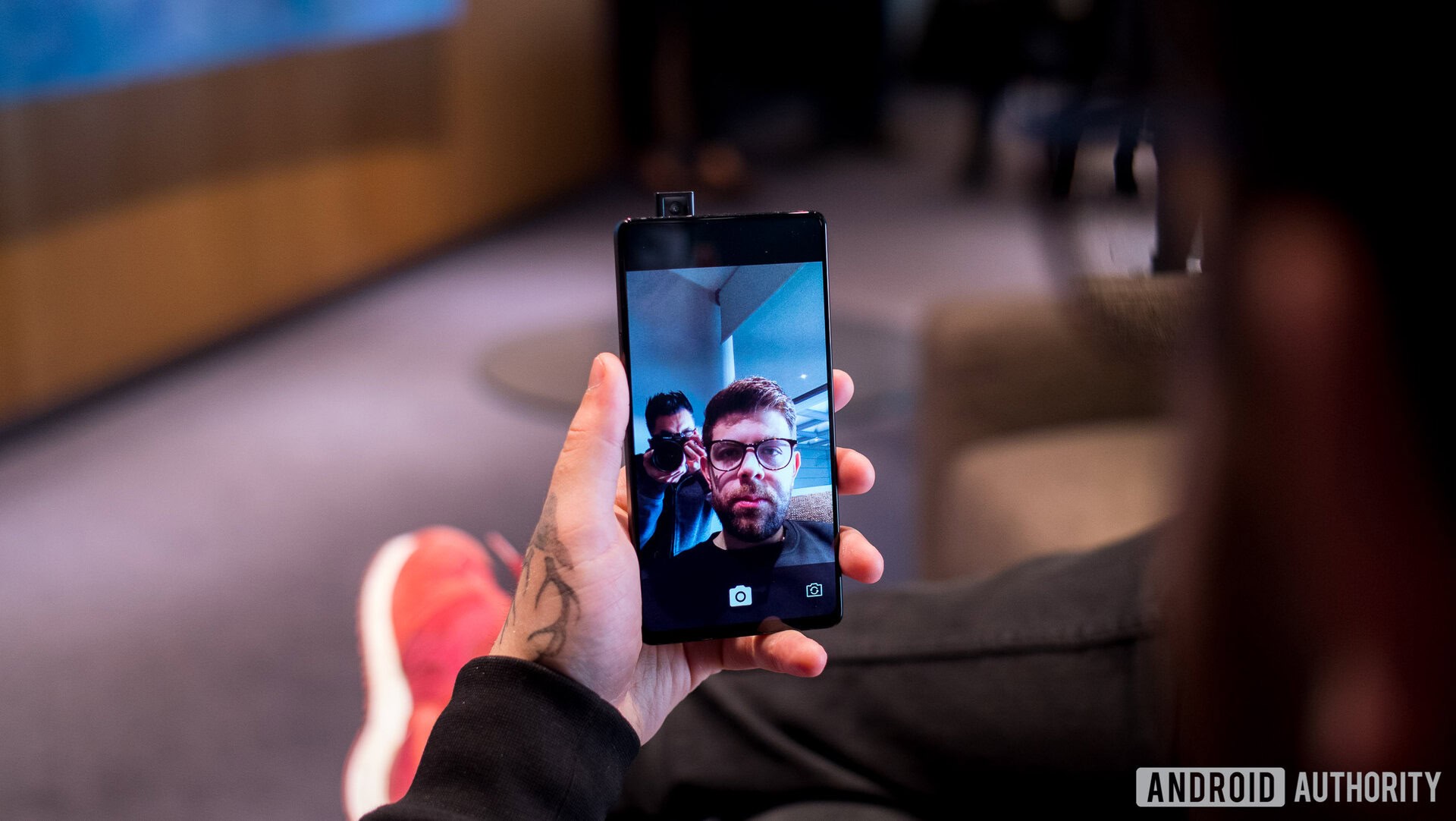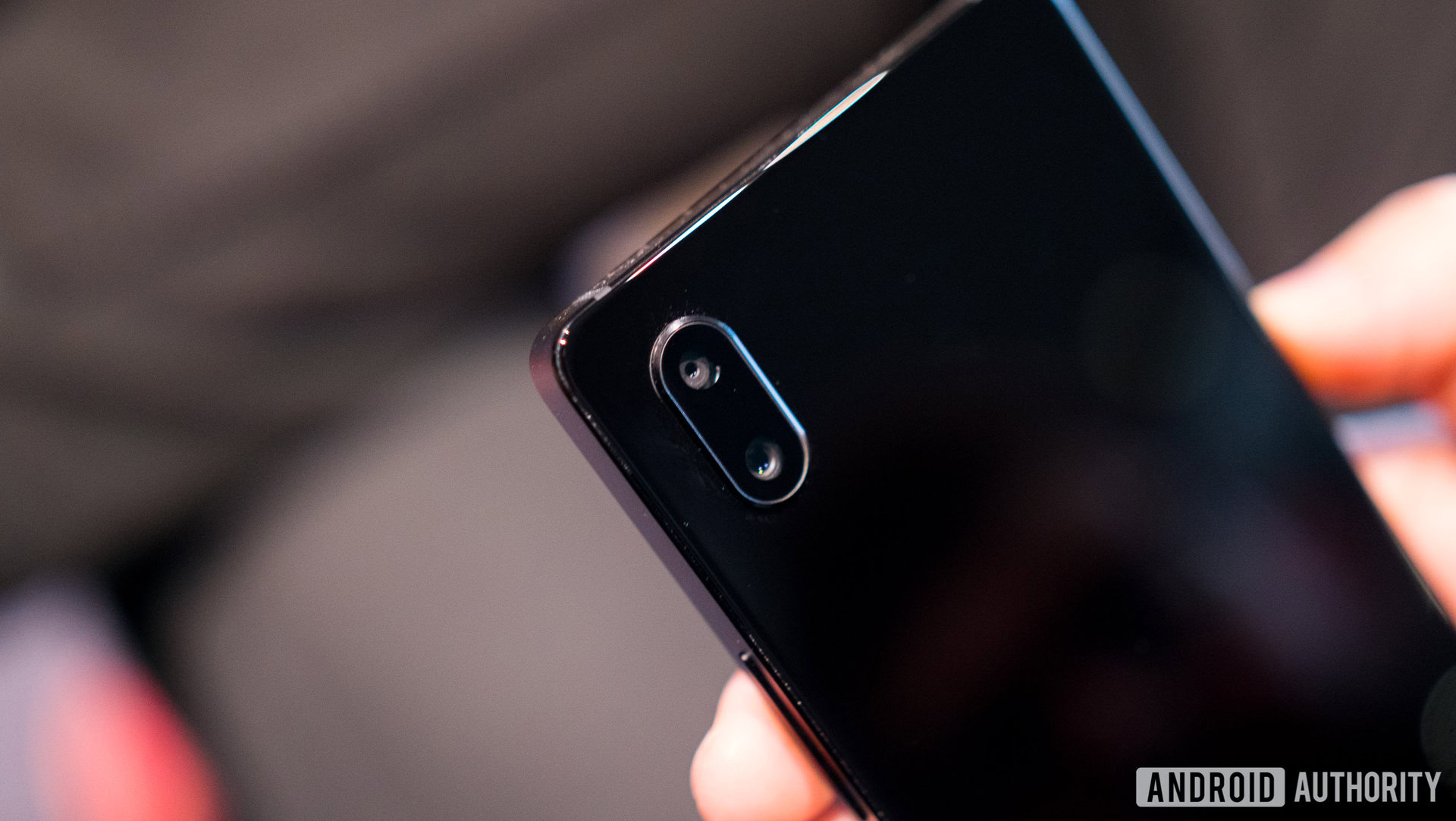Affiliate links on Android Authority may earn us a commission. Learn more.
Vivo's solution to bezel-less phones is truly exciting
Published onMarch 2, 2018

Lately it seems most companies differentiate their phones through design, without ever changing the core functionality of the device. After checking out Vivo’s APEX concept phone, I know I’m not alone in saying the technology it displayed was exciting for anyone wondering what’s next— even if we’re unlikely to ever see this particular phone on the market.
The APEX concept phone might not be vivo’s end goal, but it showcases a lot of potential solutions to common problems. The demo we saw showed off the larger fingerprint scanner baked in under the display, as well as the selfie camera which rises out of the top of the phone.
As most new smartphones continue to shrink their bezels, manufacturers have run into issues, like where to put a phone’s sensors or, in this case, where to put the selfie camera. Just look at the Essential Phone, the iPhone X, or the plethora of new phones with notches at MWC.

But just because we’ve always had these things on the front of the phone doesn’t mean they have to stay there. The vivo concept moved the ambient light sensor to the top of the phone and embedded the proximity sensor in the screen.
I, like many of you, just always assumed the selfie camera was a staple on the front of a phone. It makes sense, seeing as it needs to record your face, but the obvious solution to this issue on a bezel-less screen is to put it somewhere else. The old Sharp Aquos Crystal from 2014 moved it to the chin, but that resulted in a giant bottom bezel and successfully captured the absolute worst angle with every selfie — the same was true of the Xiaomi Mi Mix.
Vivo, on the other hand, went in the complete opposite direction, offering up a novel but obvious solution that received almost universal praise from those who saw it. vivo embedded the front-facing camera inside the body of the phone, with it smoothly sliding out only when required.

With the camera and all of the moving parts inside the phone, one might assume it would be thick and bulky, but surprisingly it wasn’t too bad. Sure it didn’t feel as sleek as something like the Galaxy S9 but it also didn’t seem any thicker than something like the Razer Phone. vivo also decided to keep the headphone jack, proving you can still have an innovative smartphone design without needing to get rid of it.
This could protect privacy, too — if someone hacks the front-facing camera all they’re going to see is the inside of the phone. If they manage to hack it to such a degree as to make the camera pop out, you’re pretty likely to notice. Imagine if we lived in a world where every front facing camera only appeared when needed. A good example of this is the new Matebook X Pro which has the webcam pop up from the keys when you need to access it. Or the Lenovo Smart Display which resurrects the old slider-over-the-camera trick we used to see on laptops.
However, the biggest reason I’m a fan of this camera is also the simplest: it’s just cool. Sure, adding a mechanical sliding mechanism is a risky solution that begs for problems, but it’s one of those features that makes you feel like you’re living in the future. As weird as it is to say, that’s a feeling I haven’t had with a smartphone in a long time.
What do you think of the vivo APEX camera? An innovative solution or a terrible idea?